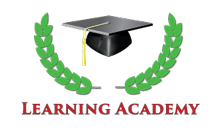
- Description
- Objectives
- Outline
- Materials
- System Requirements
- Watch a Demo
This course introduces students to the study of Macroeconomics by focusing on how we make choices in a world of scarce resources. We start by learning about the first analytical model in economics: supply, demand, and equilibrium. Next, we move on to discuss elasticity and price, two key concepts in economics. The Macroeconomic perspective is then applied to economic growth, unemployment and inflation, and international trade and capital flows. The discussion then shifts to the principal Macroeconomic model, Aggregate Demand/Aggregate Supply, and how it is applied to the Keynesian and Neoclassical perspectives. We conclude by learning about monetary policy, fiscal policy, the role of government, and international economics.
Prerequisite(s): None
After completing this course, you should be able to:
- Identify how supply, demand, and equilibrium models help us better understand both labor and finance markets
- Differentiate between elasticity, price, Macroeconomic perspectives, and Macroeconomic goals
- Recognize the Aggregate Demand-Aggregate Supply analytic model and how it is applied to differing economic perspectives
- Recall how monetary and fiscal policy are used to explain money, the banking system, financial regulations, and government spending
- Define international economics, trade, trade barriers, and protectionism
Macroeconomics Module 1
A World of Scarce Resources
- Economics Defined
- Importance of Studying Economics
- Microeconomics versus Macroeconomics
- Using Theories and Models to Understand Economics
- Overview of Economic Systems
- Individual Choices and Budget Constraints
- Production Possibilities Frontier
- Social Choices
- Objections to the Economic Approach
Macroeconomics Module 2
Supply, Demand, Labor, and Markets
- Market Demand, Supply, and Equilibrium
- Shifts in Demand and Supply for Goods and Services
- Four-Step Process for Equilibrium Changes
- Price Ceilings
- Price Floors
- Demand, Supply, and Efficiency
- Labor Market Demand and Supply
- Financial Market Demand and Supply
- Market System as an Efficient Mechanism for Information
Macroeconomics Module 3
Elasticity and the Macroeconomic Perspective
- Price Elasticity of Demand
- Price Elasticity of Supply
- Polar Cases of Elasticity
- Constant Elasticity
- Elasticity and Pricing
- Elasticity in Other Areas
- Gross Domestic Product
- Adjusting Nominal Values to Real Values
- Tracking Real GDP over Time
- Comparing GDP among Countries
- How GDP Measures the Well-Being of Society
Macroeconomics Module 4
Growth and Unemployment
- Recent Arrival of Economic Growth
- Labor Productivity and Economic Growth
- Components of Economic Growth
- Economic Convergence
- Defining Unemployment
- Measuring Unemployment
- Patterns of Unemployment
- Causes of Short-Term Unemployment Changes
- Causes of Long-Term Unemployment Changes
Macroeconomics Module 5
Inflation, International Trade, and Capital Flows
- Tracking Inflation
- Measuring Cost of Living Changes
- How Countries Experience Inflation
- Confusion Over Inflation
- Indexing and Its Limitations
- Measuring Trade Balances
- Historical Context of Trade Balances
- International Context of Trade Balances
- Trade Balances and Flows of Financial Capital
- National Saving and Investment Identity
- Pros and Cons of Trade Deficit and Surplus
- Level of Trade versus Trade Balance
Macroeconomics Module 6
Aggregate Supply-Demand and Keynesian Models
- Macroeconomic Demand-Supply Perspectives
- Building an Aggregate Demand-Supply Model
- Aggregate Supply Shifts
- Aggregate Demand Shifts
- Incorporating Growth, Unemployment, and Inflation into the Model
- Keynes’ Law and the Aggregate Demand-Supply Model
- Say’s Law and the Aggregate Demand-Supply Model
- Aggregate Demand in Keynesian Analysis
- The Building Blocks of Keynesian Analysis
- The Phillips Curve
- The Keynesian Perspective on Market Forces
Macroeconomics Module 7
Neoclassical Economics, Banking, and Monetary Policy
- Neoclassical Analysis
- Neoclassical Perspective Policy Implications
- Keynesian versus Neoclassical Models
- Defining Money by Its Functions
- Currency, M1, and M2 Measures of Money
- Role of Banks
- How Banks Create Money
- Federal Reserve Banking System
- Central Banks and Monetary Policy
- Bank Regulation
- Monetary Policy and Economic Outcomes
- Monetary Policy Pitfalls
Macroeconomics Module 8
International Capital Flow and Government Policy
- Foreign Exchange Markets
- Foreign Exchange Markets Demand-Supply Shifts
- Macroeconomic Effects of Exchange Rates
- Exchange Rate Policies
- Government Spending
- Taxation
- Federal Deficits
- National Debt
- Fighting Recession, Unemployment, and Inflation with Fiscal Policy
- Automatic Stabilizers
- Discretionary Fiscal Policy Problems
- Do We Need a Balanced Budget?
Macroeconomics Module 9
Government Debt and Worldwide Macroeconomic Policy
- Impact of Government Borrowing on Investment and Trade
- Fiscal Policy, Investment, and Growth
- Government Borrowing Impact on Private Saving
- Fiscal Policy and Trade Balance
- Worldwide Economic Diversity
- Improving Worldwide Standards of Living
- Causes of Worldwide Unemployment
- Causes of Worldwide Inflation
- Balance of Trade Concerns
Macroeconomics Module 10
International Trade, Globalization, and Protectionism
- Absolute Advantage
- Comparative Advantage
- Intra-industry Trade between Similar Economies
- Benefits of Reducing International Trade Barriers
- Protectionism
- Effects of International Trade on Jobs, Wages, and Working Conditions
- Arguments for Restricting Imports
- How Trade Policy Is Enacted
- Tradeoffs of Trade Policy
**Outlines are subject to change, as courses and materials are updated.**
Ed4Career is committed to being both environmentally conscious and making it easier for you to study! We’re making your education mobile! All of our textbooks are now provided as eTextbooks. You can access them on your laptop, tablet, or mobile device and can study anytime, anywhere.
The move away from physical books to eTextbooks means you get the latest, most up-to-date version available. This also makes your training more accessible, so you can study anywhere you have your phone or tablet. The best part is that all materials are included in your training cost so there are NO extra fees for books!
Internet Connection
- Broadband or High-Speed - DSL, Cable, and Wireless Connections
*Dial-Up internet connections will result in a diminished online experience. Classroom pages may load slowly and viewing large audio and video files may not be possible.
Hardware Requirements
- Processor - 2GHz Processor or Higher
- Memory - 1 GB RAM Minimum Recommended
PC Software Requirements
- Operating Systems - Windows 7 or higher
- Microsoft Office 2013 or higher. Also, you could use a general Word Processing application to save and open Microsoft Office formats (.doc, .docx, .xls, .xlsx, .ppt, .pptx)
- Internet Browsers - Google Chrome is highly recommended
- Cookies MUST be enabled
- Pop-ups MUST be allowed (Pop-up Blocker disabled)
- The Kindle Reader App or VitalSource Bookshelf App are needed for many of our courses (No special equipment needed. This can be downloaded for FREE onto your computer.)
- PowerPoint Viewer (if you do not have PowerPoint)
- Adobe PDF Reader
- QuickTime, Windows Media Player &/or Real Player
MAC Software Requirements
- Operating Systems - Mac OS x 10 or higher with Windows
- Mac office programs or a Word Processing application to save and open Microsoft Office formats (.doc, .docx, .xls, .xlsx, .ppt, .pptx)
- Internet Browsers- Google Chrome is highly recommended
- Cookies MUST be enabled
- Pop-ups MUST be allowed (Pop-up Blocker disabled)
- The Kindle Reader App or VitalSource Bookshelf App are needed for many of our courses (No special equipment needed. This can be downloaded for FREE onto your computer.)
- PowerPoint Viewer (if you do not have PowerPoint)
- Adobe PDF Reader
- Apple QuickTime Media Player


